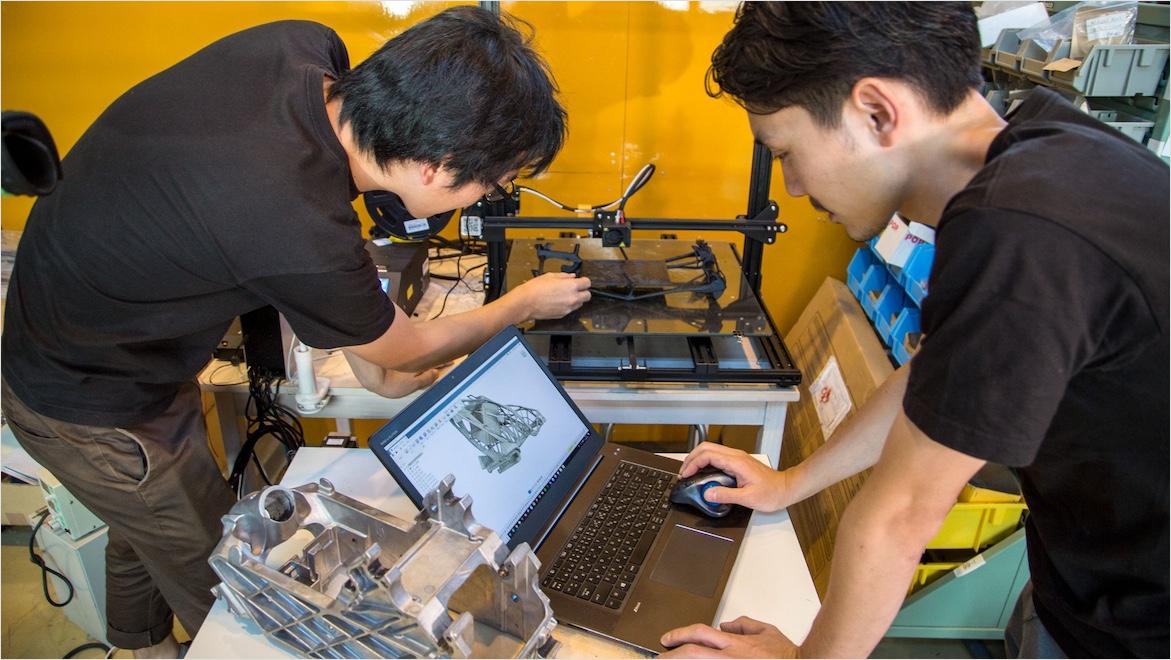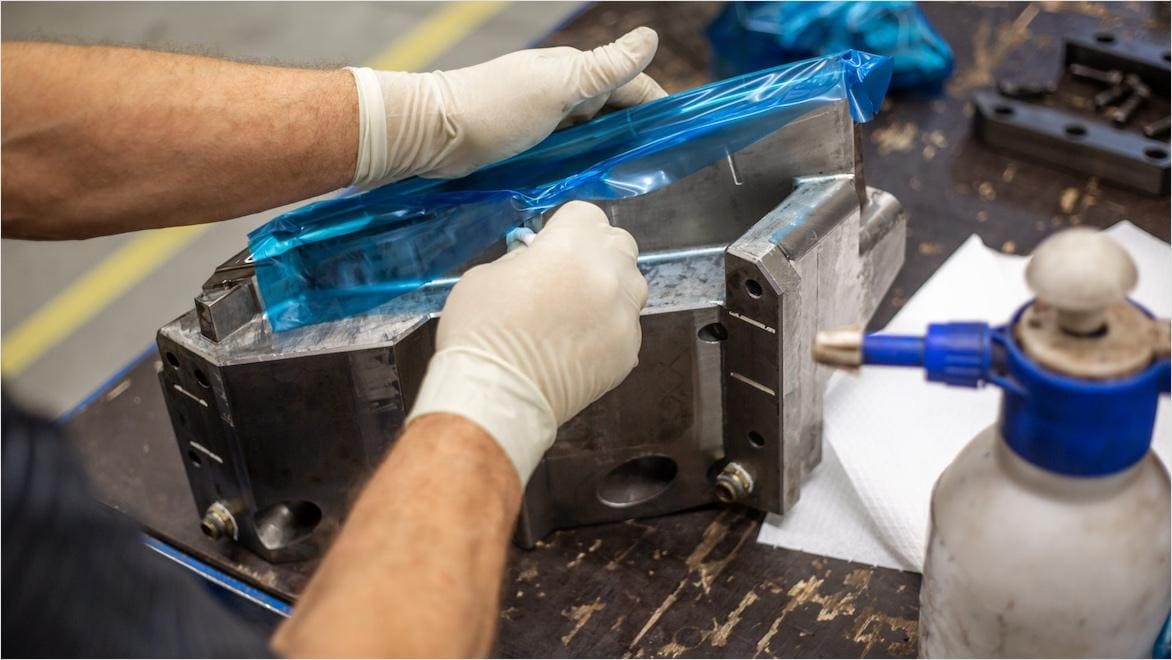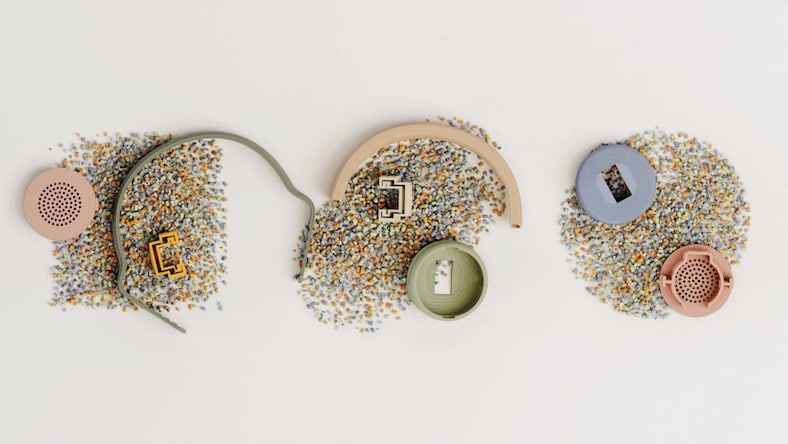& Construction

Integrated BIM tools, including Revit, AutoCAD, and Civil 3D
& Manufacturing

Professional CAD/CAM tools built on Inventor and AutoCAD
Soft tooling uses manipulable materials to produce tools quickly and inexpensively for manufacturing processes like molding and casting. Soft tooling allows product developers to innovate rapidly when prototyping. It also enables manufacturers to bring small product runs to market fast.
Hard tooling produces durable tools and molds made from strong materials like steel and nickel alloys, suitable for large production runs of robust parts with tight tolerances. Hard tooling costs more and takes longer to produce than soft tooling, however, when used for high-volume production, it can be cost-effective per unit over time.
Soft tooling is the creation of less robust tools and molds for manufacturing. Soft tooling is usually faster and less expensive to get started than hard tooling. Soft tools can be produced quickly, within hours or days, especially when using 3D printing or CNC machining. Using these methods and common soft tooling materials like silicone, carbon fiber composites, and fiberglass can produce soft tooling with greater flexibility/moldability than hard tooling, allowing product developers to make highly complex geometries quickly, without much concern about material compatibility.
All of the above makes soft tooling appealing for rapid prototyping, as well as being useful for small production runs of around 100 units or less when the priority is getting to market as fast as possible. Common uses for soft tooling include silicone molds for urethane molding, a low-volume alternative to injection molding. When it comes to soft tooling for urethane molding, it’s faster and less expensive to get started with soft tooling. Molding with soft tooling also works well for producing high-fidelity details and complex shapes. However, material curing times are longer with soft tooling.
Hard tooling uses more durable materials, such as steel, aluminum, and nickel alloys. This suits a wider array of high-volume processes, including injection molding, stamping, machining, welding, assembly, and casting. Because hard tooling can hold up against high pressures and high-precision requirements, it works well for large production runs of thousands, hundreds of thousands, and even millions of units. The materials used for hard tooling injection molding cure within minutes or seconds, making it the faster process per unit for large production runs. Hard tools do, however, cost more and take longerto produce.
Firms should choose between soft tooling vs. hard tooling based on the details of the part or product, including the complexity of the geometry, smoothness of the surface finish, the necessary lifespan of the tools, project timeline, and the tooling budget compared to the production volume.
Get Inventor + AutoCAD + Autodesk Fusion + more—Professional-grade tools for product development and manufacturing planning.
Compared to hard tooling, soft tooling provides several specific production benefits:
Product developers can manipulate soft tooling materials quickly, making iterations and design changes easier during rapid prototyping.
Particularly for low-volume production, soft tooling is cost-effective. The steel and aluminum used for hard tooling—while durable for high-volume production—often cost more than common soft tool materials like silicone, carbon fiber composites, and fiberglass.
Product developers making soft tools with materials like silicone can 3D print molds with high fidelity, making complex mold patterns and shapes easier to accomplish than with other methods.
INFINITE ACOUSTICS
Infinite Acoustics used the full scope of Autodesk Fusion integrated CAD/CAM/CAE software to develop nine speaker product lines in only 12 months, from concept to prototyping to production. The small company manufactures its audiophile speakers on-demand using 3D printers and recycled/upcycled materials like old tires and ocean plastic waste.
HARDSHELL LABS
Watch as the Techno-Tort, a decoy baby desert tortoise, lures ravens into its trap and sprays them with the kryptonite to carnivorous birds: artificial grape flavor. Hardshell Labs used Autodesk Fusion to produce the high-fidelity recreation of a tortoise to try to reverse the reptiles’ fortunes in California’s Mojave Desert.
BATCH.WORKS
London start-up Batch.Works sources recycled, biodegradable polylactic acid plastic (PLA) to 3D-print a growing line of housewares, furnishings, and consumer electronics devoted to circular economy practices like reduced waste, digital prototyping, and just-in-time management. Also, its products are designed in Fusion for sustainable production, extended life, and eventual reuse, like the Kibu children’s headphones that can be expanded and reshaped as kids grow.
Image courtesy of Batch.Works
Design and rapid prototyping go hand-in-hand for quickly iterating during product development. Learn all about the technologies, methods, and benefits of rapid prototyping, as well as which industries use it to cost-effectively advance their product ideas.
Take an in-depth look at the differences between 3D printing and injection molding, including the origins, technology, and applications of these two popular methods for producing plastic parts.
In this five-minute video, see how software advancements, cloud computing, and process automation have elevated the old technique of injection molding to be accessible and inexpensive for mass-producing a plethora of everyday goods.
The cost difference between soft tooling vs. hard tooling is the difference between upfront costs vs. long-term costs.
With soft tooling, the cost to get started is lower, but because the tools have a shorter lifespan, they are not practical for large-batch production, and the per-unit cost may be higher for soft tooling. Hard tooling requires higher upfront costs, but because it can be used for high-volume production, hard tooling can offer lower per-unit costs.
Soft tools are often faster to produce than hard tools because soft tooling is done with materials like silicone that are easier to work with. Hard tooling, on the other hand, is done with more rigid materials like steel and aluminum and takes longer to produce.
As a result, it is faster to get started with soft tooling for rapid prototyping. Soft tools, however, tend to wear out faster than hard tools. With hard tooling for injection molding, the injected material cures faster than with silicone tools, so hard tooling will likely be faster per unit for large-volume production.
The different types of tooling for manufacturing boil down to soft tooling vs. hard tooling. Soft tools can be made faster and are well suited to rapid prototyping and small production runs of 1–100 units because the tools usually wear down more quickly from exposure to high pressure and temperatures.
Hard tools made of materials like steel or aluminum take longer to produce and generally cost more initially to produce. However, their durability makes them suited to high-volume production of hundreds, thousands, and even millions of units. Thus, hard tooling is more cost-effective for large production runs.
Soft tooling is ideal for low-volume production because, with low-volume tasks like rapid prototyping, soft tools can be made quickly and inexpensively, letting product developers evaluate and tweak the results quickly. Soft tools also tend to degrade faster, which makes hard tooling more cost-effective in the long term for high-volume production.





